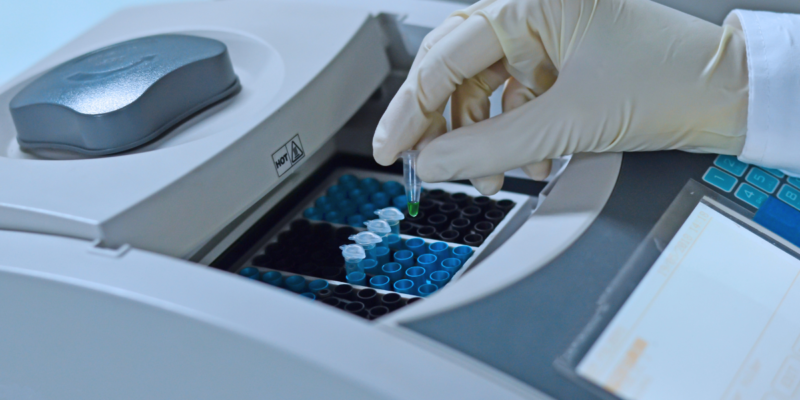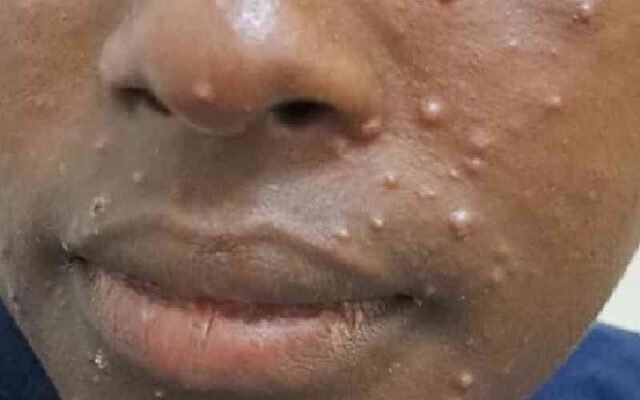The diagnosis of Monkeypox viral infection is a topic we can discuss since the virus has been making headlines recently. It’s not your everyday illness, and diagnosing it can be challenging.
Table of Contents
Historical Background of Monkeypox
Before we get into the nitty-gritty of diagnosis, I must say that Monkeypox isn’t the new kid on the block – it’s been around since 1958, when it was first discovered in a colony of research monkeys.
However, the first human case was reported in the Democratic Republic of Congo in 1970.
Since then, it’s been popping up in various parts of the world, keeping scientists and healthcare professionals on their toes.
Transmission and Spread
Now, you might wonder, “How on earth does someone catch monkeypox?”
Well, it’s not as straightforward as you might think. Unlike its cousin, smallpox, monkeypox isn’t easily transmitted between humans.
It typically spreads through close contact with infected animals, such as rodents or primates. However, human-to-human transmission is possible through respiratory droplets, bodily fluids, or contact with contaminated materials.
Symptoms and Clinical Presentation
Early Symptoms
Imagine waking up one day feeling like you’ve been hit by a truck. That’s how monkeypox often starts.
The initial symptoms are similar to those of many other viral infections: fever, headache, muscle aches, and fatigue. It’s like your body is throwing a tantrum, trying to tell you something’s not right.
Skin Lesions
Skin lesions are where things get interesting (and a bit gross, if we’re being honest).
Within a few days, the trademark sign of monkeypox appears: the rash. It starts as small, red bumps that gradually turn into fluid-filled blisters.
These blisters eventually crust over and fall off. It’s like your skin is putting on a very unwelcome show.
Then the systemic signs ……
Systemic Symptoms
As if the rash wasn’t enough, monkeypox can also cause swollen lymph nodes, chills, and sometimes even difficulty breathing. It’s like your body is going through a full-scale rebellion.
Now, let us focus on the main issues-diagnosis
Diagnosis Methods
There are many approaches to the diagnosis of Mpox, which are:
Clinical Evaluation
So, how do doctors figure out if someone has monkeypox?
It starts with a physical examination and medical history. The doctor will ask about recent travels, animal contacts, and any possible exposure to infected individuals.
It’s like being a detective, but instead of solving a crime, the doctor is solving a medical mystery.
At this stage, the doctor can make a “Preliminary or provisional diagnosis.” Based on the information he gathered from the patient, he can strongly believe that the patient has the Mpox virus.
However, one of the challenges of provisional diagnosis is the differential diagnosis, which the doctor has to battle with as he(the doctor) could be thinking of entirely different viruses or infections.
Differential Diagnosis
Monkeypox can look like other diseases, especially in the early stages. Chickenpox, measles, and even some bacterial skin infections can all present similar clinical features.
This makes it difficult for clinical diagnosis.
However, the doctor may be wrong, and that is where laboratory diagnosis or confirmation comes in.
The Doctor will send the patient or his sample to a clinical laboratory for confirmation.
Laboratory Testing
The gold standard of MPOX diagnosis is molecular tests like Real-time PCR. PCR means Polymerase Chain Reaction.
It is a technique for creating many copies of a specific DNA segment, amplifying small amounts of DNA into larger quantities.
PCR Testing

PCR testing is the gold standard for monkeypox diagnosis. It is highly precise and sensitive.
Swabs from skin lesions, including the surface, exudate, or crusts, are the clinical samples used for MPOX PCR.
These samples are preferred because they contain the highest concentration of the virus, making them most likely to yield positive results.
The use of whole blood alone for the MPOX PCR test is not advised because the viremic phase may have passed before the onset of rash symptoms, according to the CDC
Serology Test
When anyone, including a patient, is exposed to the Mpox virus, the patient develops antibodies against the virus.
A serology test looks for the presence of these antibodies in a person’s blood(plasma or serum).
Unfortunately, the serology test for mpox is of little value because of cross-reactivities with other viruses in the same genus as orthopoxviruses. This makes the test less specific and unreliable.
Because serological tests are almost useless in mpox diagnosis, most developing and underdeveloped countries find it difficult to diagnose the infection early enough to control the spread.
This is not the same in developed countries where real-time PCRs are routinely used in most laboratories. This will lead to early diagnosis and containment of the spreading of the infections.
Challenges in Monkeypox Diagnosis
Diagnosing monkeypox isn’t always a walk in the park.
Limited access to specialized testing like PCR in some countries or areas, the similarity to other diseases, and the rarity of the condition can all make diagnosis challenging.
Prevention and Control Measures
Of course, the best diagnosis is the one you never need to make. Prevention is key when it comes to monkeypox.
This includes avoiding contact with animals that could carry the virus, practising good hygiene, and using personal protective equipment in high-risk settings.
Treatment of mpox infection
While there’s no specific cure for monkeypox, treatments are available to manage symptoms and prevent complications.
This can include antiviral medications, pain relievers, and plenty of rest and fluids.
Conclusion
Diagnosing monkeypox infections requires a combination of clinical findings and laboratory tests. PCR remains the Gold standard for its diagnosis.
FAQs
-
- Can monkeypox be mistaken for chickenpox?
Yes, monkeypox and chickenpox can look very similar, especially in the early stages. That’s why laboratory testing is often necessary for a definitive diagnosis. - How long does it take to get results from a monkeypox test?
PCR test results can usually be available within 24-48 hours, but this can vary depending on the laboratory and testing volume. - Can you get monkeypox more than once?
While it’s rare, it is possible to get monkeypox more than once. However, previous infection typically provides some level of immunity. - Is monkeypox only found in Africa?
While monkeypox is endemic in parts of Africa, cases have been reported in various countries around the world, especially in recent outbreaks. - Can pets get monkeypox?
Some animals, including certain rodents and primates, can be infected with monkeypox. However, the risk to common household pets is generally low. - Is monkeypox the same as Mpox?
Mpox is the new name for monkeypox. It is just an abbreviated form. - How many variants are seen in mpox
mpox, has two main variants, or clades, identified by the World Health, Clade I & Clade II - Which variant is Clade I ?
This variant is primarily found in Central Africa and is known to cause more severe illness and higher mortality rates. - Which variant is clade II?
This variant is more widespread and includes two subclades, IIa and IIb. Clade IIb was the primary variant responsible for the global outbreak in 2022
- Can monkeypox be mistaken for chickenpox?


